Test Density with a Supersaturated Solution
Instructions
In this activity, you'll compare three solutions with different levels of salinity, or salt. By using food coloring, you'll be able to observe which solution is the most dense, and which is the least dense. You'll also investigate how a liquid's density affects objects that are put into it.
What You'll Need
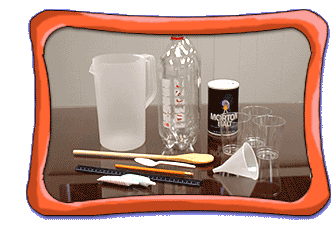
- a pitcher
- a long spoon
- 3 drinking glasses (all the same size)
- warm water
- table salt
- a spoon
- blue and red food coloring
- 2 identical soda bottles with a regular neck (not wide)
- an unsharpened pencil
- a funnel (that fits inside the top of the soda bottle)
- a ruler
What To Do
Make A Saturated Solution

Half fill the pitcher with warm water. Add a spoonful of salt, stir, and wait until the water is still. Do you see any salt at the bottom of the pitcher? If so, go to the next step. If not, keep adding salt slowly until the salt begins to collect on the bottom. The water is now saturated with salt.
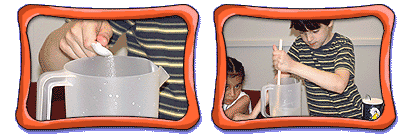

Half fill two glasses with the solution. Each glass should have the same amount. Put one glass aside and put enough blue food coloring into the other glass to turn the liquid dark blue, then stir. This glass of blue solution represents salty ocean water.
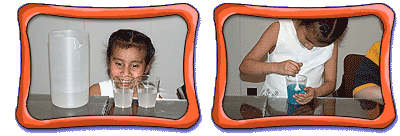
Pour the "Ocean" into the "River"

Fill a third glass halfway with warm water. This glass represents fresh river water. Then take the glass with the blue solution (ocean water) and SLOWLY pour it into the glass of warm water (river water). This thick solution will pour like syrup. The trick is to pour it gradually at the edge of the glass (SEE PICTURE) Don't mix the solution, just let it sit. What happens? Which liquid is denser — the blue one or the clear one?
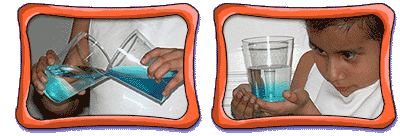

Think again about our question: Which is denser, ocean water (salty) or freshwater (no salt)? Why do you think this is?
Add a Third Layer

Take the other glass that you put aside earlier, half-filled with the saturated solution. Add some warm water to it until the glass is full. Then, put in enough red food coloring to turn the solution a deep red, and mix well. This glass is filled with a liquid of medium salinity — less salty than the blue water, but saltier than the freshwater.
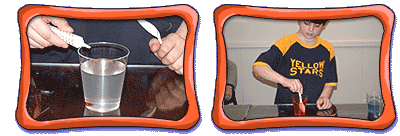

What do you think will happen if you SLOWLY pour a small amount of this red solution into the glass with the blue and clear water? Make a prediction and then try it out. What happened?
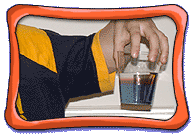
Which Pencil Will Rise to the Occasion?

Make more saturated solution (repeat Step 1). Then use a funnel to pour this solution into a soda bottle.
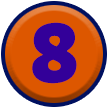
Fill an identical soda bottle with warm water (but no salt).
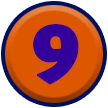
What do you predict will happen if you put an unsharpened pencil (eraser side down) into each bottle? Try it out and observe the results. Use a ruler to measure the difference. Measure from the base of the bottle up and see which is the greater distance. In which condition is the pencil higher in the water column?

Based on how the pencils "behaved" in the freshwater and saltwater, which do you think is easier for you to float in, a swimming pool or the ocean? Another way of asking this question is: "In which kind of water will you have greater buoyancy — freshwater or saltwater?" Buoyancy is how much something will float.
BONUS ACTIVITY: Bottles in the Bathtub
Take an empty soda bottle, fill it halfway with water, and screw on the top. Then take another empty soda bottle (the same size as the first) and put on the top (with no liquid inside). Which bottle do you think has greater buoyancy? To find the answer, fill a bathtub with water and compare how the two soda bottles float in it.
Image Credits:
All photos courtesy of AMNH.




 Biodiversity
Biodiversity
 Brain
Brain
 Genetics
Genetics
 Marine BiOLogy
Marine BiOLogy
 MicrobiOLogy
MicrobiOLogy
 PaleontOLogy
PaleontOLogy
 ZoOLogy
ZoOLogy
 AnthropOLogy
AnthropOLogy
 ArchaeOLogy
ArchaeOLogy
 Astronomy
Astronomy
 Climate Change
Climate Change
 Earth
Earth
 Physics
Physics
 Water
Water
